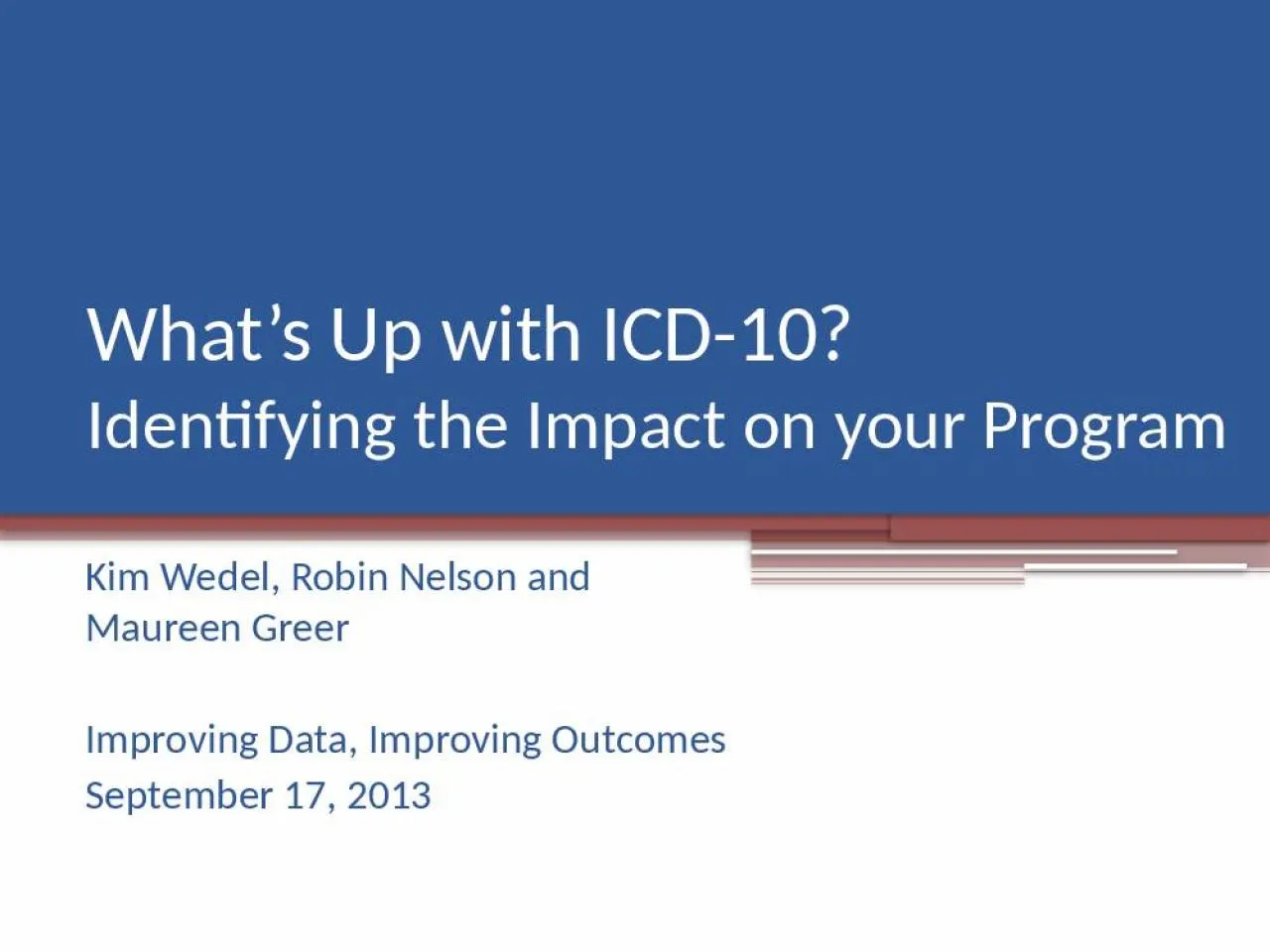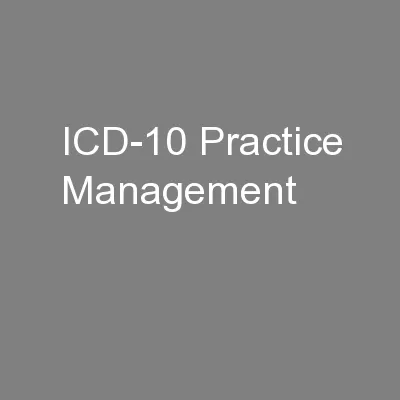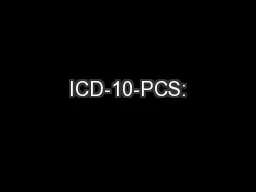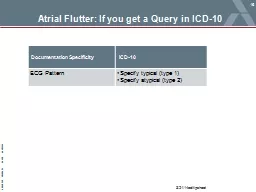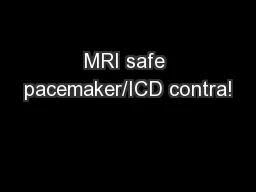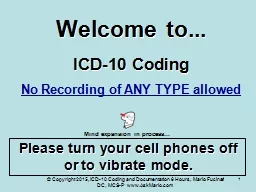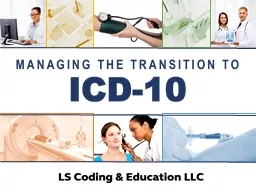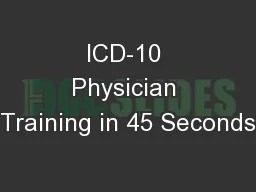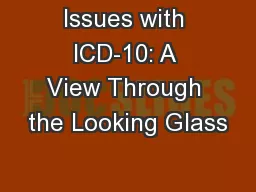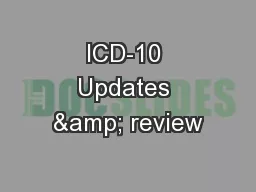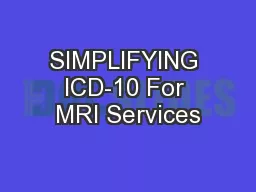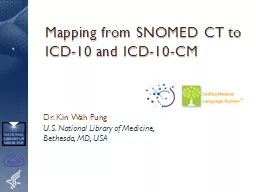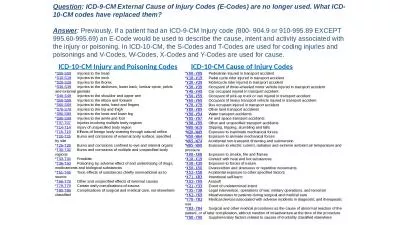PPT-What’s Up with ICD-10?
Author : daisy | Published Date : 2022-05-14
Identifying the Impact on your Program Kim Wedel Robin Nelson and Maureen Greer Improving Data Improving Outcomes September 17 2013 Overview of Session Background
Presentation Embed Code
Download Presentation
Download Presentation The PPT/PDF document "What’s Up with ICD-10?" is the property of its rightful owner. Permission is granted to download and print the materials on this website for personal, non-commercial use only, and to display it on your personal computer provided you do not modify the materials and that you retain all copyright notices contained in the materials. By downloading content from our website, you accept the terms of this agreement.
What’s Up with ICD-10?: Transcript
Download Rules Of Document
"What’s Up with ICD-10?"The content belongs to its owner. You may download and print it for personal use, without modification, and keep all copyright notices. By downloading, you agree to these terms.
Related Documents

